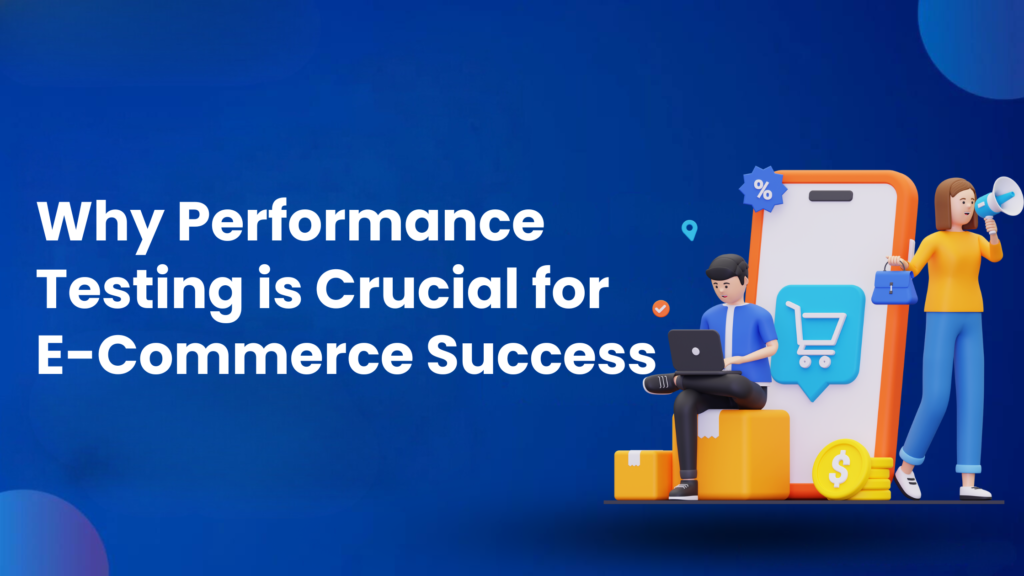

Why Performance Testing is Crucial for E-Commerce Success?
Introduction
The e-commerce industry is booming, with millions of businesses worldwide offering products and services online. In this fast-paced, highly competitive environment, ensuring a seamless and efficient user experience is essential. Performance testing plays a pivotal role in achieving this by validating the speed, scalability, and reliability of e-commerce platforms. This blog explores why performance testing is indispensable for e-commerce success.
1. Ensuring Seamless User Experience
In the e-commerce world, user experience (UX) can make or break your business. Slow-loading pages, crashes, or unresponsive elements can lead to frustrated users abandoning their carts. Performance testing helps identify and fix such issues, ensuring your website delivers a smooth, fast, and reliable experience.
Example:
When Amazon introduced its “One-Day Delivery” feature, it optimized its website to handle the increased traffic during checkout. Performance testing simulated various scenarios, ensuring a seamless shopping experience for users.
Impact: Improved UX leads to higher customer satisfaction and increased sales.
2. Handling High Traffic During Sales and Promotions
E-commerce websites experience traffic spikes during sales events like Black Friday, Cyber Monday, or holiday promotions. Performance testing ensures your platform can scale to accommodate these surges without crashing.
Example:
Flipkart’s “Big Billion Days” sale often attracts millions of shoppers simultaneously. Performance testing simulated peak traffic scenarios, helping the platform maintain stability during high-demand periods.
Key Tools: Load testing tools like JMeter and LoadRunner are commonly used for traffic simulations.
3. Optimizing Page Load Times
Studies show that even a one-second delay in page load time can result in a 7% reduction in conversions. Performance testing ensures your pages load quickly across various devices and network conditions.
Example:
An e-commerce website selling fashion apparel reduced its page load time from 5 seconds to 2 seconds after conducting performance tests. This optimization resulted in a 20% increase in conversions.
Metrics to Monitor: Time to First Byte (TTFB), Average Load Time, and Render Time.
4. Improving Scalability
As your business grows, your e-commerce platform must handle an increasing number of users, products, and transactions. Performance testing validates whether your system can scale to meet these demands effectively.
Example:
When Shopify merchants saw a surge in online orders during the pandemic, performance testing ensured the platform could scale to support tens of thousands of new businesses.
Impact: Scalability ensures uninterrupted service, even as demand grows.
5. Preventing Cart Abandonment
Slow performance during the checkout process is a leading cause of cart abandonment. Performance testing identifies bottlenecks in the payment gateway, inventory checks, and confirmation processes, ensuring a fast and smooth checkout experience.
Example:
An e-commerce platform improved its cart-to-purchase ratio by 15% after resolving bottlenecks found during performance tests.
6. Validating Mobile Responsiveness
With over 60% of online shoppers using mobile devices, ensuring mobile responsiveness is critical. Performance testing evaluates how your platform performs on various devices and screen sizes.
Example:
An electronics retailer conducted performance tests for its mobile app, ensuring it provided the same level of performance as its desktop counterpart. This led to a 25% increase in mobile transactions.
7. Testing Third-Party Integrations
E-commerce platforms rely on third-party services like payment gateways, inventory systems, and shipping providers. Performance testing validates the reliability and speed of these integrations.
Example:
When integrating with PayPal, an online store conducted performance tests to ensure transactions processed quickly, even during high traffic.
Key Focus Areas: API response times and error rates.
8. Enhancing Security
Security is a critical concern for e-commerce businesses handling sensitive customer data. Performance testing works alongside security testing to ensure that high traffic does not expose vulnerabilities in your system.
Example:
A retailer conducted stress tests to evaluate how its platform responded to DDoS (Distributed Denial-of-Service) attacks, ensuring robust performance under malicious traffic spikes.
9. Reducing Downtime Costs
Downtime can be incredibly costly for e-commerce businesses, both in terms of lost revenue and damaged reputation. Performance testing identifies weak points, allowing you to prevent downtime.
Example:
An e-commerce website conducted regular performance tests, identifying and resolving database issues that could have caused downtime during peak sales.
Impact: Preventive action saves money and maintains customer trust.
10. Gaining Competitive Advantage
In a crowded market, performance testing can be your competitive edge. A faster, more reliable platform attracts and retains customers better than competitors with slower systems.
Example:
A niche online bookstore gained market share by optimizing its website performance, offering faster search and checkout processes compared to competitors.
Conclusion
Performance testing is no longer a luxury but a necessity for e-commerce success. From ensuring seamless user experiences to reducing downtime costs, it addresses critical aspects of an online business’s performance. Enroll in our comprehensive course on JMeter and learn how to master this powerful tool.By embracing JMeter, you not only enhance your career prospects but also contribute to delivering exceptional software quality.By investing in performance testing, e-commerce businesses can enhance their credibility, improve customer satisfaction, and achieve sustainable growth in an ever-competitive market.
Also read:
Consult Us


















